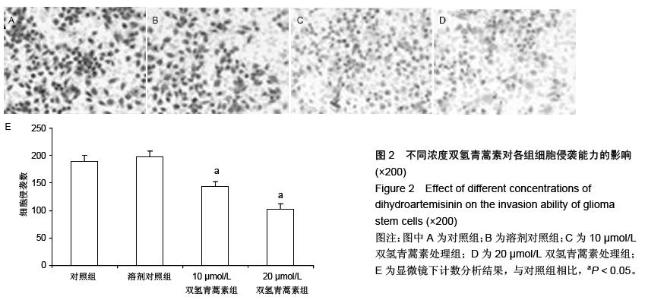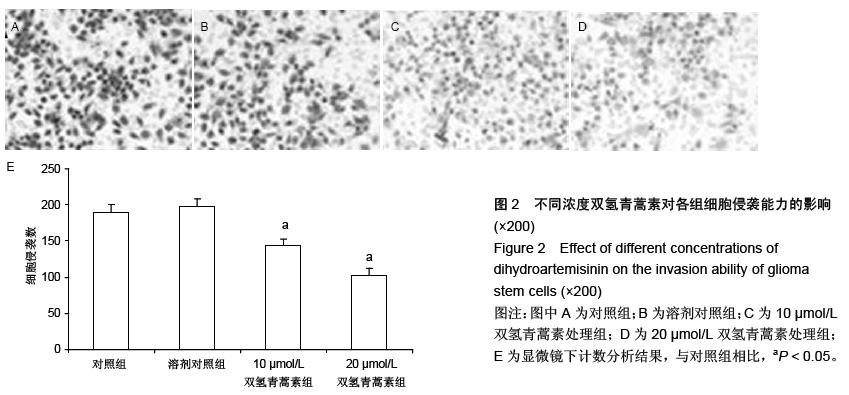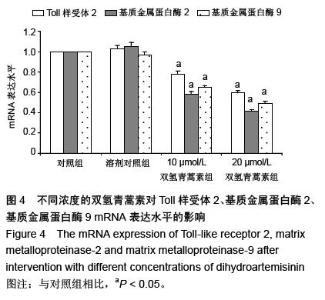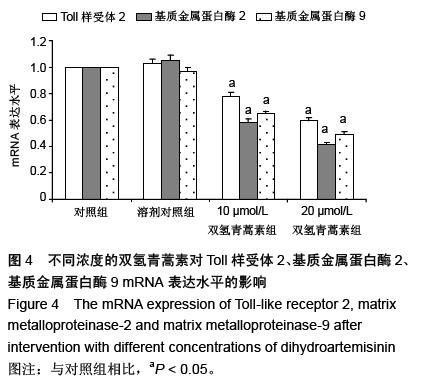| [1] Hess KR, Broglio KR, Bondy ML. Adult glioma incidence trends in the United States, 1977-2000. Cancer. 2004;101(10):2293-2299.
[2] Rosenfeld MR, Pruitt AA. Management of malignant gliomas and primary CNS lymphoma: standard of care and future directions. Continuum (Minneap Minn). 2012;18(2):406-415.
[3] Bexell D, Svensson A, Bengzon J. Stem cell-based therapy for malignant glioma. Cancer Treat Rev. 2013; 39(4):358-365.
[4] Cheng L, Wu Q, Guryanova OA, et al. Elevated invasive potential of glioblastoma stem cells. Biochem Biophys Res Commun. 2011;406(4):643-648.
[5] Khoshnevisan A. An overview of therapeutic approaches to brain tumor stem cells. Med J Islam Repub Iran. 2012;26(1):31-40.
[6] 戴宜武,王振光,秦家振.脑胶质瘤治疗进展[J].中华临床医师杂志:电子版,2013,7(14):6225-6228.
[7] Stupp R, Mason WP, van den Bent MJ, et al. Radiotherapy plus concomitant and adjuvant temozolomide for glioblastoma. N Engl J Med. 2005; 352(10):987-996.
[8] 孙增峰,李文良,谷峰,等.胶质瘤耐药相关机制的研究进展[J].中华肿瘤防治杂志,2011,18(7):551-556.
[9] Van Meir EG, Hadjipanayis CG, Norden AD, et al. Exciting new advances in neuro-oncology: the avenue to a cure for malignant glioma. CA Cancer J Clin. 2010; 60(3):166-193.
[10] Singh SK, Hawkins C, Clarke ID, et al. Identification of human brain tumour initiating cells. Nature. 2004;432 (7015):396-401.
[11] 陈垒.MicroRNA-107在胶质瘤和胶质瘤干细胞中的生物学功能研究[D].广州:南方医科大学,2013.
[12] Singh SK, Clarke ID, Terasaki M, et al. Identification of a cancer stem cell in human brain tumors. Cancer Res. 2003;63(18):5821-5828.
[13] 王凡.Toll样受体2在胶质瘤干细胞侵袭迁移中的作用及其机制探讨[D].重庆:第三军医大学,2012.
[14] Mao H, Gu H, Qu X, et al. Involvement of the mitochondrial pathway and Bim/Bcl-2 balance in dihydroartemisinin-induced apoptosis in human breast cancer in vitro. Int J Mol Med. 2013;31(1):213-218.
[15] Zhang JL, Wang Z, Hu W, et al. DHA regulates angiogenesis and improves the efficiency of CDDP for the treatment of lung carcinoma. Microvasc Res. 2013; 87:14-24.
[16] 尹怡,曹鎏,李飞,等.双氢青蒿素促进胶质瘤GL261细胞的凋亡[J].第三军医大学学报,2013,35(12):1179-1182.
[17] Davis TM, Binh TQ, Ilett KF, et al. Penetration of dihydroartemisinin into cerebrospinal fluid after administration of intravenous artesunate in severe falciparum malaria. Antimicrob Agents Chemother. 2003;47(1):368-370.
[18] Zhou HJ, Wang Z, Li A. Dihydroartemisinin induces apoptosis in human leukemia cells HL60 via downregulation of transferrin receptor expression. Anticancer Drugs. 2008;19(3):247-255.
[19] Chen J, McKay RM, Parada LF. Malignant glioma: lessons from genomics, mouse models, and stem cells. Cell. 2012;149(1):36-47.
[20] Jego G, Bataille R, Geffroy-Luseau A, et al. Pathogen-associated molecular patterns are growth and survival factors for human myeloma cells through Toll-like receptors. Leukemia. 2006;20(6):1130-1137.
[21] Szczepanski MJ, Czystowska M, Szajnik M, et al. Triggering of Toll-like receptor 4 expressed on human head and neck squamous cell carcinoma promotes tumor development and protects the tumor from immune attack.Cancer Res. 2009;69(7):3105-3113.
[22] Huang B, Zhao J, Li H, et al. Toll-like receptors on tumor cells facilitate evasion of immune surveillance. Cancer Res. 2005;65(12):5009-5014.
[23] Nair P, O'Donnell CM, Janasek K, et al. Lipopolysacchride-treated mammary carcinomas secrete proinflammatory chemokines and exhibit reduced growth rates in vivo, but not in vitro. Immunol Invest. 2009;38(8):730-748.
[24] Xie W, Huang Y, Xie W, et al. Bacteria peptidoglycan promoted breast cancer cell invasiveness and adhesiveness by targeting toll-like receptor 2 in the cancer cells. PLoS One. 2010;5(5):e10850.
[25] Watts C, West MA, Zaru R. TLR signalling regulated antigen presentation in dendritic cells. Curr Opin Immunol. 2010;22(1):124-130.
[26] Xie W, Wang Y, Huang Y, et al. Toll-like receptor 2 mediates invasion via activating NF-kappaB in MDA-MB-231 breast cancer cells. Biochem Biophys Res Commun. 2009;379(4):1027-1032.
[27] 董玮.基质金属蛋白酶2诱导大肠癌肿瘤细胞增殖与侵袭的试验研究[D]. 吉林:吉林大学,2012.
[28] Forsyth PA, Wong H, Laing TD, et al. Gelatinase-A (MMP-2), gelatinase-B (MMP-9) and membrane type matrix metalloproteinase-1 (MT1-MMP) are involved in different aspects of the pathophysiology of malignant gliomas. Br J Cancer. 1999;79(11-12):1828-1835.
[29] Van Meir EG, Hadjipanayis CG, Norden AD, et al. Exciting new advances in neuro-oncology: the avenue to a cure for malignant glioma. CA Cancer J Clin. 2010; 60(3):166-193.
[30] 程金湘.胶质瘤患者健康相关生命质量研究[D].西安:第四军医大学,2013. |





